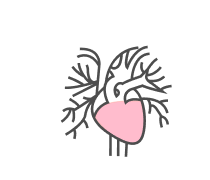What are the the 3 branches of the cardiovascular system?
Blood doping is dangerous because it increases blood viscosity and...
Leukopenia is a low white blood cell count
Methods utilized in hemostasis are: Vascular spasm, Platelet plug...
Type AB is the:
What is the average life-span of the RBC?
Blood is filled with
Iron is required for oxygen transport
Blood prevents infection (through WBCs, Antibodies, Inteferons, and...
Platelets are granulated; and those granules release chemicals that...
B lymphocytes mature in what type of bone marrow?
What is the shape of an erythrocyte?
Fibrinolysis is the clot dissolved by activity of plasmin, an enzyme...
Albumin maintains blood osmotic pressure
Type O is the:
Blood helps regulate fluid volume of the cells
Physical Characteristics of blood are
Wastes (Carbon Dioxide) move in the reverse direction:Tissue Cells...
Blood is ____________ degrees
Mature erythrocytes have nucleus'
Which blood plasma is the soluble precursor of fibrin for blood...
What is the function of a lymphocyte?
Sample taken from the the vein with a hypodermic needle & syringe.
Postnatal Hematopoiesis occurs only in red bone marrow of flat bones...
_________________ __________________ are activated platelets stick...
Plasma makes up what percentage of blood
Allows excessive blood loss through blood clotting
Layers in the blood vessels are: Tunica intima, Tunica media, and...
Which pathway leads to feces when recycling hemoglobin components?
The HEME group in Hemoglobin transports what?
All WBCs are not nucleated and have no hemoglobin
Hemopoeis is the production of
Hormone from the liver stimulates platelet formation
If the patient is Type AB what are the antigens?
What is blood doping?
Estrogen stimulates RBCs formation
What disease does a patient have if there is low oxygen with the blood...
What helps blood regulate pH?
Why do you not stick a hypodermic needle/syringe in an artery?
Which is a kidney response to hypoxia
Which leukocytes are NOT granulocytes?
What are NOT the functions of the blood?
Describe the distribution of blood through gases.
Monocytes include fixed kupffer cells in the liver and wandering...
Produced by the kidneys and increase RBC precursors
________________ _________________ are platelets stick to exposed...
Thrombosis is:
Are you ready to pass this quiz and Chapter 18 quiz??
What is NOT a blood plasma protein?
What gives feces the brown-ish color?
Which granulocytes are high in allergic reactions and increases the...
Stoppage or arrest of bleeding in a quick & localized fashion when...
Gel separates into liquid (serum) and a clot of insoluble fibers...
Dilute, watery fluids found in and out of cells
Hematopoiesis takes place in the yolk sacs, liver, spleen, thymus,...
What is the blood pH of blood? *Hint: Give a range
Which is NOT part of the Tissue Hypoxia?
Leukocytosis is a low white blood cell count
Emblous is a clot transported by nitrogenous wastes
Which is a color characteristic of a neutrophil?
Which blood plasma proteins have antibodies bind to foreign substances...
Platelet Plug Formation is:
Metabolic wastes from the blood go from ___________ to __________...
Give the range of the blood volume of the average female.
If the patient is Type O what are the antibodies?
Nutrients and oxygen diffuse from the blood capillaries into the ESF...
Where do you withdraw blood from?
Activation occurs when:1) Endothelium is damaged and platelets come in...
Common technique for diabetics to monitor daily blood sugar
Blood is thick and not stick (5X more viscous) than water and flows...
Which granulocyte has a bilobed nuclei?
What gives urine its yellow-ish color?
Which one is an indication of an Vascular Spasm?
What is the hemolytic disease of the newborn may develop causing...
Give the range of the blood volume of an average male.
Blood cell formation is also known as
Blood plasmas is created by
Centrifuge is a process where blood is spun until there is a...
Hematocrit is
Which is NOT a solute in blood plasma?
When recycling the globin portion broken down into
(You can select more than one answer)Cytokines are
When recycling of heme portion splits into
What is the hematocrit range for female?*HINT - Give a range, not an...
What is the hematocrit range for male?
(Choose any of the following)Extrinsic pathway are/is:
















